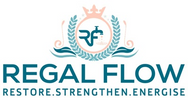
The Most Cost-Efficient Way to Buy Water: A Smart Guide
Ever feel like you’re spending a fortune just to stay hydrated? The most cost-efficient way to buy water is tap water with a quality filter—it’s dirt cheap, convenient, and eco-friendly. But is bottled water ever worth it? Stay tuned for a cost comparison: countertop water dispensers vs. bottled water ! 🚰💰
Cost Comparison: Tap, Bottled, and Filtered Water
Direct Cost Analysis
Let’s talk money! How much does your water actually cost? Here’s a quick breakdown:
-
Tap Water: In most areas, tap water costs just pennies per litre—often as low as £0.01 per litre.
-
Bottled Water (Single Use): A 500ml bottle can set you back £0.50 to £1.50—that’s £1-£3 per litre, making it hundreds of times more expensive than tap.
-
Bottled Water (Bulk): Buying in packs lowers costs, bringing it down to £0.25-£0.50 per litre, but it’s still a costly habit.
-
Filtered Water: A filter jug costs around £20-£40, with replacement filters at £5-£10 each, averaging £0.05-£0.10 per litre over time.
Hidden Costs and Long-Term Savings
Bottled water isn’t just pricey—it comes with hidden expenses:
-
Plastic Waste: The average bottled water drinker creates over 100kg of plastic waste per year!
-
Transport Costs: Bottled water isn’t just about what’s in the bottle—you’re also paying for manufacturing, shipping, and storage.
-
Filtration Savings: Investing in a £100 countertop or under-sink filter provides years of clean water at a fraction of the cost of bottled.
Filtration Options: Balancing Cost and Quality
Basic vs. Advanced Filtration
Not all filters are created equal! Here’s what you need to know:
-
Basic Filters (Pitchers, Faucet Filters): Affordable, easy to use, but need frequent filter changes.
-
Advanced Filters (Under-Sink, Reverse Osmosis): Higher upfront cost (£100-£500) but better filtration and long-term savings.
The right filter depends on your budget, water quality, and long-term savings goals.
Practical Considerations
-
Convenience: Pitchers need frequent refilling, while faucet and under-sink filters provide instant access.
-
Health & Quality: Reverse osmosis (RO) systems remove nearly all contaminants but also strip beneficial minerals—some have remineralisation features to fix this.
-
Maintenance: Basic filters need replacing every 2-3 months, whereas advanced systems last years with minimal upkeep.
Optimising Your Water Consumption and Spending
Calculating and Reducing Water Needs
Want to cut down on water costs? Start by working out how much you actually drink.
-
Household Consumption: A family of four drinking 2 litres per person per day will spend very different amounts depending on the water source.
-
Money-Saving Tips:
-
Use a Reusable Bottle: Fill up before heading out instead of buying bottled water.
-
Invest in a Good Filter: A one-time purchase can save hundreds per year.
-
Refill at Public Stations: Many places offer free filtered water refills—why pay for what you can get for free?
-
Final Thoughts
When it comes to cost, convenience, and sustainability, tap water with a filter is the clear winner. Bottled water is the most expensive and wasteful option, while filtration strikes the perfect balance between cost and quality. By making smart choices about your water consumption, you can stay hydrated without draining your wallet!
More Countertop Water Dispenser info we think you'll love
Which is cheaper to run kettle or water dispenser?
Is it cheaper to buy water bottles or water dispenser?
Countertop Water Dispensers vs. Bottled Water
How can I reduce my water bills?
Is it worth it to buy bottled water?
Do water dispensers use a lot of electricity?
How much does it cost to run a water dispenser?


Leave a comment